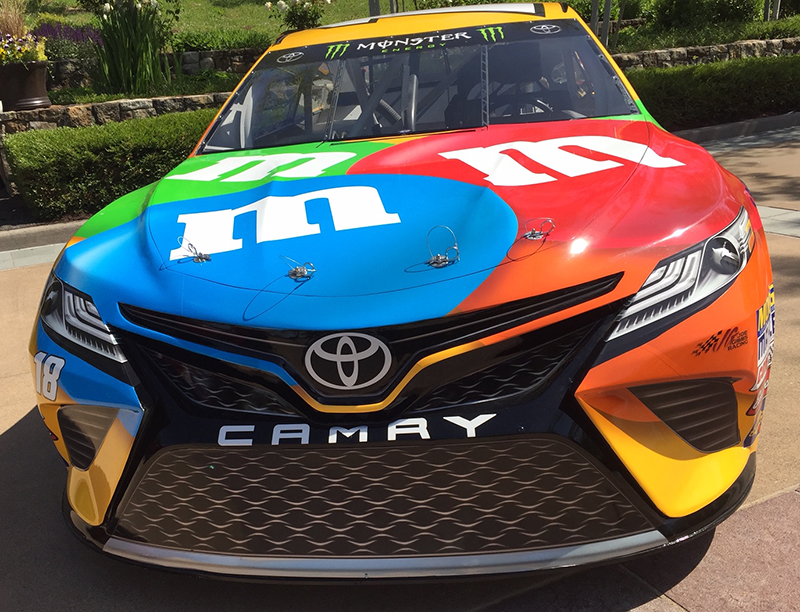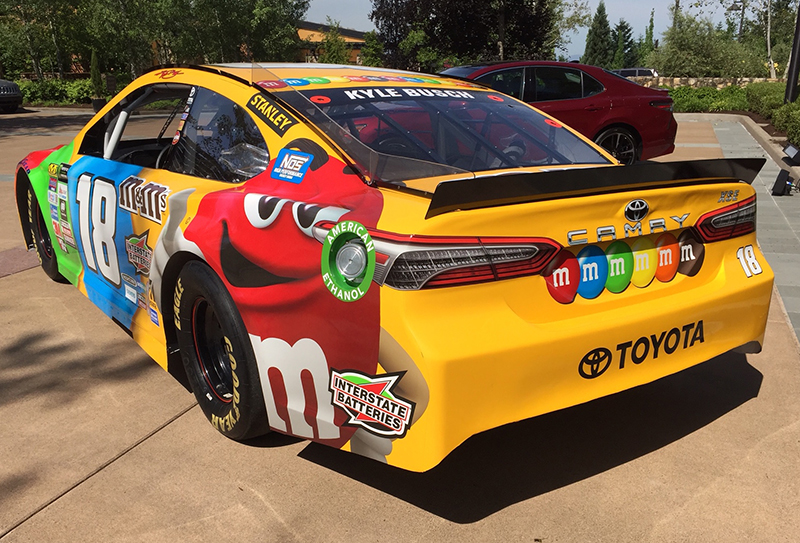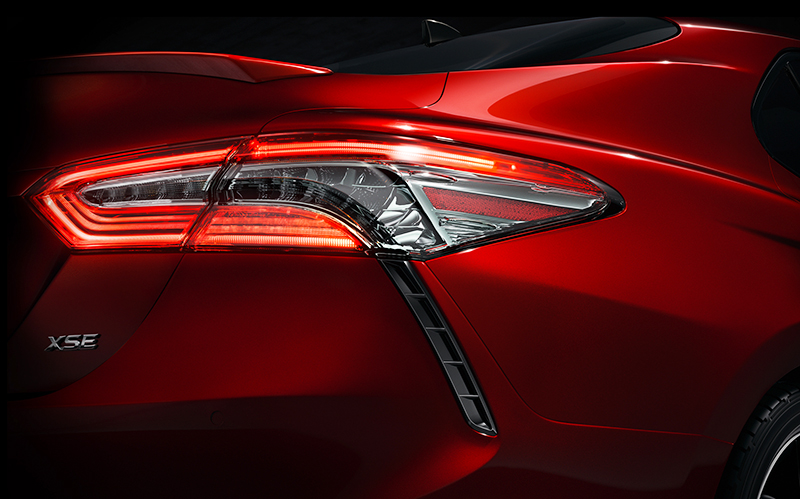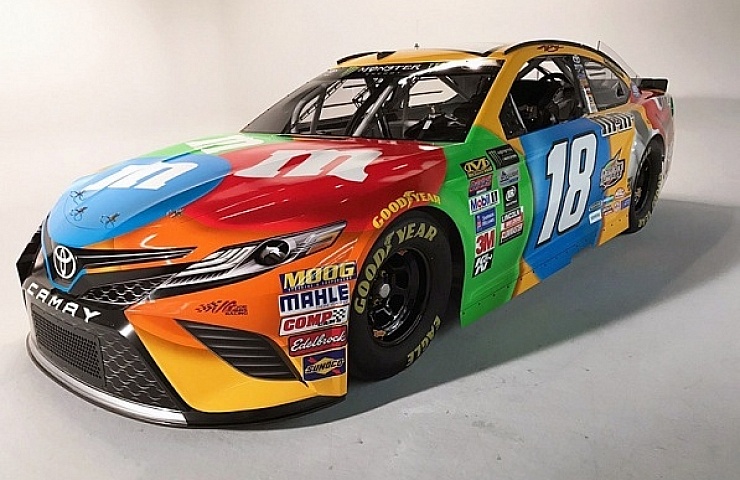If the Toyota Camry isn’t the first car that comes to mind when you think about race-inspired performance, you’re not alone. So you might be surprised to learn that the all-new 2018 model that rolls into dealerships this summer shares the same body as Kyle Busch’s Monster Energy Cup Series car that he has been competing with this year.
Why has Toyota veered away from its plain-vanilla formula for the Camry, which has chalked up 18 million global sales? It’s because Toyota CEO Akio Toyoda wants to infuse every vehicle Toyota sells, including the Camry, with his personal passion for racing.
Slippery Strategy

The front end of the NASCAR Camry, followed by the production model.

2018 Toyota Camry
Akio Toyota might want to make the Camry fun to drive, but how can the production Camry benefit from a race car designed to run 200 mile-per-hour circles at Daytona? The short answer is efficiency. Air tunnel testing that makes a car more efficient also makes it go fast.
Looking at the NASCAR Cup car and new production Camry side-by-side, the similarities are obvious: same low, wide stance, spindle grille, heavily raked roofline, and squat rear end. Of course, there are significant differences—such as an air intake on the racecar that is limited to the area under the grille. All other air inlets are sealed, as per NASCAR regulations. A painted grille on the Cup car gives it a visual affinity with the production model.
“When we start to design a car, we think of the expressive nature of design. The car is an expressive piece of rolling sculpture,” said Ian Cartabiano, chief designer at Toyota’s Newport Beach CALTY studio, in an interview with eBay Motors. “Aerodynamic performance becomes part of the equation as soon as we get into the scale model.”
For Cartabiano, who designed both the production and race version of the Camry, it was important that he worked closely with engineers at TRD, Toyota’s arm responsible for high-performance variants and related parts and accessories for Toyota cars and trucks.

It’s a race car, but has Prius-like lines from the roof to the rear spoiler.
“Our goal with the Camry was to keep the deep sculpture design with a coefficient of drag target that was almost Prius-like,” he continued. “For example, the line from the edge of the roof to the rear spoiler is perfect for airflow.”
By minimizing the car’s coefficient of drag in key areas, the design team was able to maintain the car’s visual appearance with lines on the sedan’s rear pillar. The design makes the newest Camry look more aggressive than previous Toyota models.
Lively Lines
“Cooling and aero targets aren’t always best friends,” Cartabiano said. “We changed the angle of the hood to be optimal for airflow and lowered the whole body. This reduced drag and kept air on top of the car.” Improving downforce was especially important for the NASCAR Cup car, to prevent it from lifting at high speeds on the track.
“The whole rear corner of the car has a diagonal chop, like a giant venturi,” Cartabiano said.

The design of the 2018 Camry’s tail lamps control airflow off the car’s rear corners.
In broad terms, the Venturi effect is what happens when you choke air flow through a constricted section, like a groove or a pipe. The Camry’s designers used it to their benefit:
- Lines along the side of the car act as air channels
- The design of the tail lamps control airflow off the car’s rear corners
- The side mirrors were moved from the windows to the door to increase airflow and improve visibility
- Sculpting in the lower portion of the doors creates downforce to enhance high-speed stability
Designers used the same shaping in the race car. There is, of course, one big difference between the Camry Cup car and the production sedan: the NASCAR car’s smoking 358 cubic inch V-8 pushrod engine. But who’s to say you can’t plant some magic under the hood of your own Camry sedan?
Even if you can’t afford the high-performance engine, smaller modifications such as ground effects, different wheels and tires, and cold air intake and exhaust can push serious power to the wheels. If the Camry is good enough to take its superstar driver to victory lane, think of what it might do for your daily commute.
See Toyota Cars and Trucks 2018 Camry for sale on eBay.





